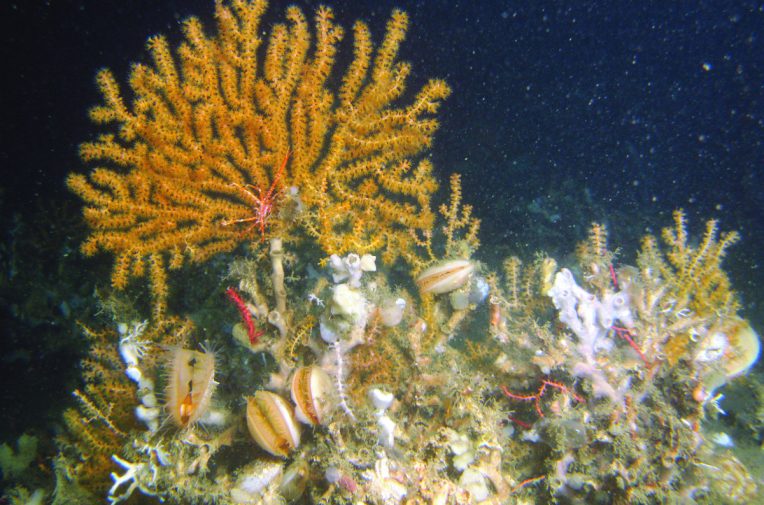
Coral on the cold-water reef. Photo: TL, Sven Loven Centre, Uni Gothenburg
BP’s big new gas plans in West Africa pose climate and biodiversity threats
A new investigation by Unearthed and SourceMaterial looks at BP's new gas project on the border of Senegal and Mauritania, an area surrounded by highly biodiverse ecosystems. The project is the beginning of BP's plans for the region, which could lead to emissions using up to 1% of the world's 1.5C carbon budget.
BP’s big new gas plans in West Africa pose climate and biodiversity threats
A new investigation by Unearthed and SourceMaterial looks at BP's new gas project on the border of Senegal and Mauritania, an area surrounded by highly biodiverse ecosystems. The project is the beginning of BP's plans for the region, which could lead to emissions using up to 1% of the world's 1.5C carbon budget.
Coral on the cold-water reef. Photo: TL, Sven Loven Centre, Uni Gothenburg
Half a kilometre below the surface of the Atlantic ocean, stretching alongside most of Mauritania and down to Senegal, lies an ecosystem that is 100 metres high and 580 kilometres long, and which took around 200,000 years to grow. Scientists believe that it’s the largest known cold-water reef in the world. In the seas around it, endangered or vulnerable shark, turtle and whale species are likely present – and waterbirds stop to feed as they make their journey along one of their major global migration corridors.
On the edge of this ecosystem, BP is developing a new gas field 2.7km below the surface, a depth never before attempted in Africa. Construction is already underway, with the first 20-year phase approved two years ago in an agreement between BP and its partners – Kosmos Energy, the national oil companies Petrosen and SMHPM, and the Senegalese and Mauritanian governments. First gas is expected in two years time.
BP has described the Greater Tortue Ahmeyim (GTA) project as “the first step in establishing the basin as a world-class gas province” that could turn Senegal and Mauritania into “global LNG players”. It is the first of three hubs in the region in which BP plans to operate, over at least 30 years, although at the moment only the first phase of the GTA project has been approved.
If these further projects go ahead in full, BP stands to recover around 40 trillion cubic feet (tcf) of gas in the region, according to “conservative” estimates by analysts Rystad Energy. When burned, this gas would create around 2.2bn metric tonnes of CO2 emissions, equivalent to 0.3-1% of the remaining global carbon budget left to keep warming within a 1.5C rise.
BP declined to comment on this estimate or to provide Unearthed with their own estimate of the scope 3 emissions of these projects if approved, but confirmed that emissions from the first phase of GTA and any further stages or approved projects will count against their emissions reductions targets.
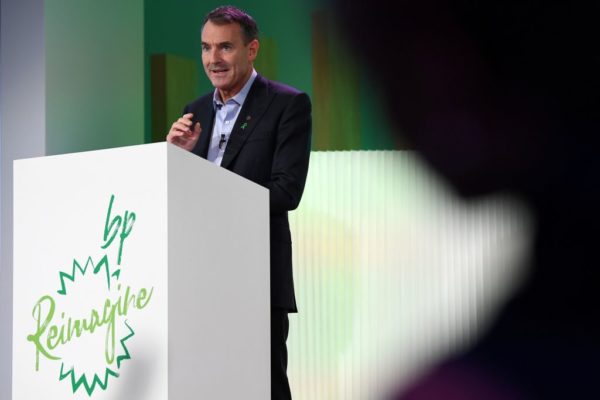
The GTA project is happening in spite of BP’s new push to go green, with commitments on both climate and biodiversity and a role as a partner in Prince Charles’ new Terra Carta initiative, which aims to give “fundamental rights and value to Nature”. The company is expected to play a role in COP26, the climate conference planned for November in Glasgow that is tipped to be the most important since the Paris deal.
But scientists and experts contacted by Unearthed warned that BP’s plans in West Africa could pose risks to the “extremely rich ecosystems” nearby, as well as to the climate.
Mohamed Adow, director of Power Shift Africa, a think-tank based in Nairobi, told Unearthed: “Fossil fuels, including gas, are a major threat to Africa’s food security, water security, public health and will ultimately undermine our livelihoods and development. We can’t excuse a company like BP, which at a time that it seems to be taking climate change more seriously is simultaneously bankrolling a project that may end up having a big impact on Africa’s carbon footprint and future.
“Our continent is incredibly blessed with wind and solar energy resources. The biggest obstacle to Africa’s transition to green energy is finance and investment so these polluters need to help Senegal and Mauritania to leapfrog dirty energy, not lock them into a fossil fuel path.”
In January, a new study by the University of Oxford predicted that renewable energy will account for less than 10% of Africa’s electricity generation in 2030, while total generation will double.
“These findings point to high carbon lock-in risks for Africa,” it argued, “unless a rapid decarbonization shock occurs leading to large-scale cancellation of the fossil fuel plants currently in the pipeline.”
BP promises to cut emissions to net zero by mid-century and to cut oil and gas production by 40% within a decade yet the investment in this project appears to push in the opposite direction, significantly increasing Africa’s regional supply of gas, rather than clean energy. BP also currently has fossil fuel projects in Angola. It has no renewables projects in sub-saharan Africa and no plans for any.
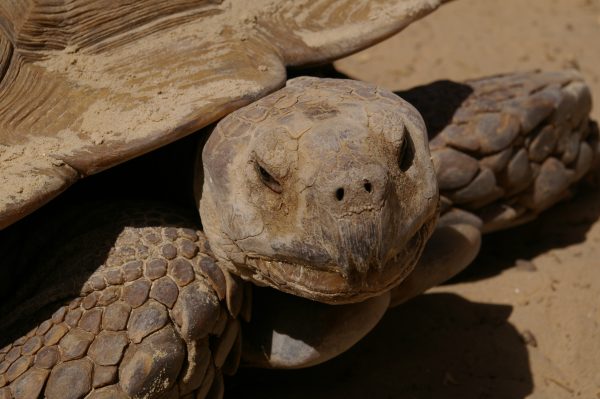
Biodiversity
But climate is not the only green priority for BP. Their second green strategy, announced by new CEO Bernard Looney with much less fanfare, intends to open “a new chapter” in its approach to biodiversity.
It defines what BP now considers “no-go areas” for fossil fuel extraction and production: UNESCO World Heritage sites and areas covered by the two highest (of seven) categories of the IUCN’s classification system for protected areas. They also committed to achieving a net positive impact on biodiversity on new projects from 2022 and to enhance it on existing projects.
The GTA project highlights the limitations of that approach. It does not fall within any of BP’s “no-go areas”, but is surrounded by sensitive ecosystems.
Mauritania’s coastline is a significant part of the east Atlantic flyway, one of the world’s main migration routes for waterbirds. Every year, millions of birds make the journey from the Arctic to Africa, relying on a series of coastal sites en route to stop and feed. The seas around the area chosen for the project are a major stop-over site and feeding ground for migratory seabirds from around the world.
The hub’s terminal will be sited less than 5km from Mauritania’s Diawling national park – with its mangroves and acacia forests and 250 different species of birds – which falls under IUCN’s third category of protection.
A similar distance away, in Senegal, is the marine protected area (MPA) of Saint-Louis, an important site for local fishing and a feeding ground for whales and dolphins. It’s also part of the migratory corridor for birds heading to the Langue de Barbarie and Djoudj national parks, themselves 15km and 35km away respectively. While the former is a nesting site for sea turtles, the latter is a UNESCO World Heritage site and a sanctuary for over 1.5 million birds. Even closer is the Guembuel reserve, a designated wetland of international importance home to flamingoes, tortoises and monkeys.
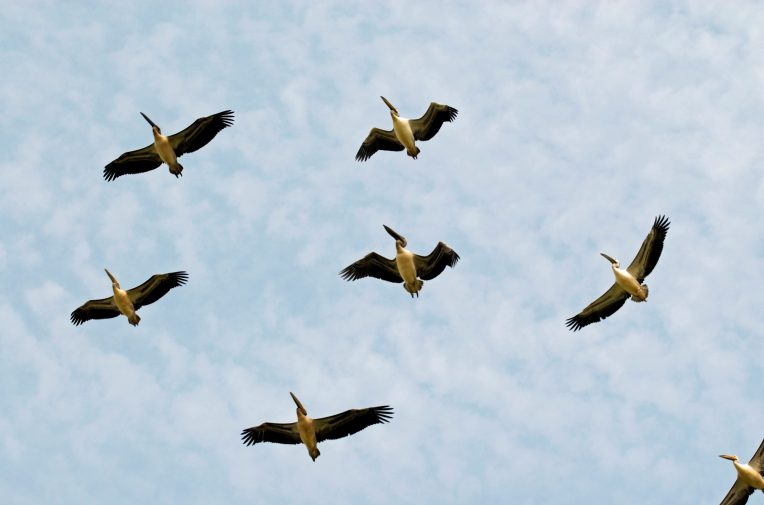
Consultant marine biologist Sandra Kloff, who has been working in the area for 25 years, warned that BP’s strategy is insufficient to protect the biodiversity here.
“If we believe that the survival of our species is guaranteed by just respecting a few species and pieces of the planet recognised by IUCN or other international organisations as vulnerable, then we’re doomed…The point should be to protect vulnerable biodiversity identified by the scientific community full stop,” she told Unearthed.
Although most of its coral is dead, the reef and the surrounding seafloor habitats are home to species – many found for the first time in this area – of fish, crabs, giant clams and sponges. The reef is also a carbon sink and could be a new frontier in climate change and pharmaceutical research. And in the southern part of the reef – its most sensitive area and closest to the project – scientists have found live corals and believe others could grow back.
The project’s pipeline snakes through different sections of the reef, with it about 600m away on both sides of the pipeline. Kloff is concerned that this is close enough to mean that sediment disturbed during the burial of the pipeline could smother species such as live coral.
She told Unearthed: “This type of coral reef is now known as an essential fish habitat and the surrounding soft bottom sediments provide habitats for a large diversity of species – in fact the diversity of species living on the Mauritanian seafloor is the highest in the area where BP are putting their pipeline. Any kind of physical disturbance including pipelines and the debris they bring would destroy part of this biodiversity [on the seafloor], forever.”
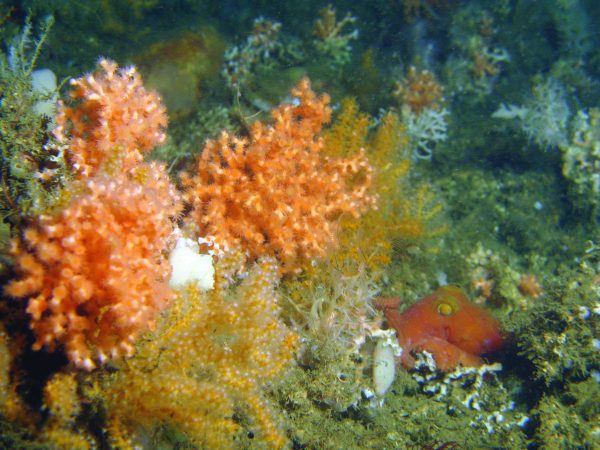
BP pointed to a study that suggests that any impacts from the burial of pipelines are generally restricted to a 100m radius. Kloff however told Unearthed that the impact could vary depending on the environment and that the speed of the tidal currents on the seafloor in Mauritania mean that the sediments could move over much larger areas. Pipeline burial would allow for the continuation of damaging practices, such as bottom-trawling by the fishing industry, she added. She suggested that BP could alternatively lay the pipeline on the seafloor. Its final route will be discussed in an upcoming analysis.
Fishing
The pipeline will connect the project’s multiple large pieces of infrastructure. Its twelve wells are 120km offshore, with two major floating production units and a 1km long ‘breakwater’, a concrete and rock structure that extends into the sea, much nearer to the shoreline.
Small-scale fishing groups in the area are concerned about the impact of this infrastructure on their livelihoods.
Elhadji Dousse Fall, president of the association of artisanal line fishers in Saint Louis, told Unearthed: “The safety exclusion zone surrounding the breakwater will lead to a significant reduction in our fishing area. Artisanal anglers come fishing every day in these areas to make a living for their families. But so far we have received nothing in terms of compensation. What are we going to do?”
Fishing is a key plank of the economy in West Africa and an essential source of protein, but local businesses are increasingly struggling to compete with the industrial practices of European and Chinese trawlers, and a growing fishmeal industry.
Oumar Dieye, co-ordinator of the local artisanal fishing council of Saint Louis, told Unearthed: “Coastal fishing communities are at the forefront of the impacts of fossil fuel exploitation in Senegal but the involvement of these communities in the process has been weak. The tenuous meetings held by BP and the state were insufficient to address our concerns.”
BP told Unearthed that they have an ongoing dialogue with fishing communities near the project area.
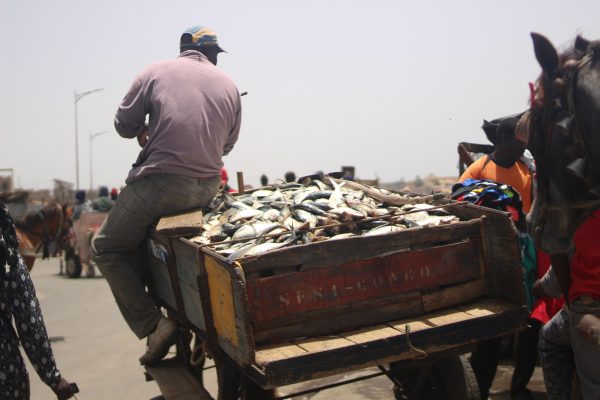
Moussa Mbaya Gueye, executive director of LEAD Francophone Africa, a Senegalese NGO that works with communities affected by extractive industries added: “Our concerns are linked to sustainability. Will it be a question of transition to new professions for fishermen or will they still be able to exploit fishery resources in the context of oil and gas exploitation?”
Condensate
Artisanal fishermen and coastal communities also fear a spill of liquid hydrocarbons, which they say could further reduce the supply of fish and the biodiversity in the area.
Although BP is drilling for gas, the well also contains condensate, a hydrocarbon that is a byproduct of natural gas that condenses into a liquid after it is released from the well.
According to the project’s environmental and social impact assessment (ESIA) – which Unearthed and SourceMaterial have seen – without mitigation, a condensate spill following the eruption of a well could affect the maritime areas of 8 or 9 countries.
While it states that such an accident would be “extremely rare”, it recognises that this could have lethal or sublethal impacts on the birds, marine mammals and other threatened species in the area and could cause acute damage to plants, such as mangroves, in protected areas. Vegetation in wetlands could take years to recover, it says.
BP’s modelling states that without mitigation measures such a spill could hit the coast of Mauritania and Senegal, including the marine protected area, the national park and the protected wetland reserve in less than a week.
BP told Unearthed that their emergency response and spill response plans would be activated in case of such an event. The company declined to send these plans to Unearthed, but said they covered a full range of logistical and waste management procedures and were being developed with the national authorities, with whom they are also working on training and response exercises.
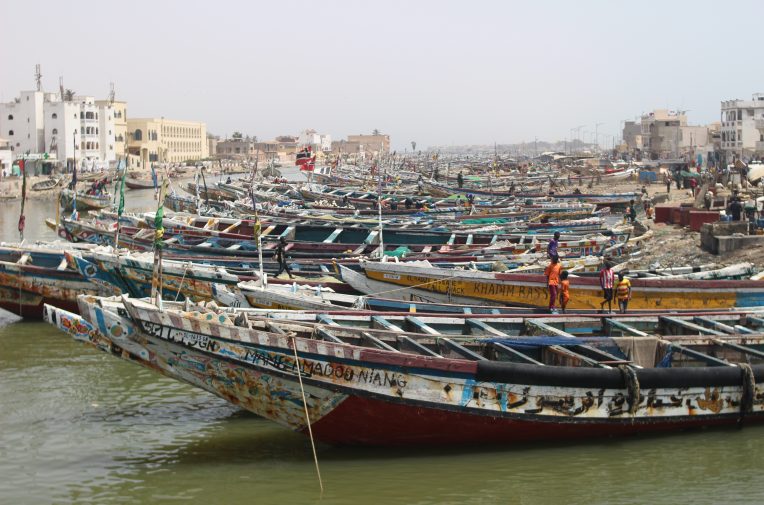
Dr Mandy Joye, a professor in marine sciences at the University of Georgia, told Unearthed: “This area is incredibly sensitive and largely unexplored – there are potentially novel species and there is a significant potential for biodiversity discovery there. There are all kinds of issues with gas projects, but condensates in particular make me really nervous. It’s hard to imagine a more nightmarish scenario in terms of clean up than a condensate spill as it’s almost invisible.
“There are a number of different ways that animals could suffer from a condensate release. I’d be really worried about impacts on corals – which are known to be sensitive to hydrocarbon exposure generally.”
However she added that the amount of condensate that the ESIA estimates would be released in such an event is relatively small and so the risk would limited.
Environmental impact assessment
Concerns about the project are not new. In 2018, Kloff was part of a group of international scientists that produced a report for the Mauritanian government recommending the introduction of marine conservation zones to protect the reef, including in the area in which BP is planning to locate the pipeline and its gas processing vessel. The report recommended a ban on bottom trawling, and called for any fossil fuel developments to be subject to thorough environmental assessments.
Later that year, an international group of ten scientists who had studied the area extensively – including Kloff – wrote to BP about its environmental impact assessment, stating that some of its conclusions about its impact on the region’s biodiversity were “fundamentally wrong” and ignored important science.
Meanwhile a report on the project by the Netherlands Commission for Environmental Assessment (NCEA) – an independent body of experts that advises governments on environmental assessments – concluded that it contained “gaps in information, analysis and justification of choices that make it difficult to appreciate the magnitude of the impacts and the relevance of mitigating measures proposed.”
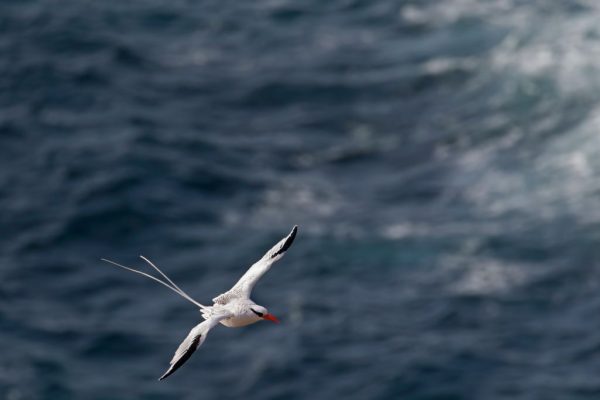
Wim Mullié, a marine eco-toxicologist who has been monitoring the area for over 20 years, told Unearthed that the ESIA “insufficiently recognised the extremely rich ecosystems which are found in the areas surrounding the GTA project area and the scientific references that they have used to justify their project and minimise the potential impacts have meanwhile been superseded by recent studies, none of which have been consulted or used by BP.”
The scientists called for the oil and gas giant to withdraw the ESIA and to have it rewritten, with a new biodiversity analysis, by scientific experts. BP has agreed to draw up the biodiversity plan, working with an NGO and independent scientists.
A spokesperson for BP told Unearthed: “We want to help conserve the marine ecosystem in Mauritania and Senegal and over the past two years BP, on behalf of our GTA partners, have worked closely with scientists and other stakeholders to address concerns raised about the ESIA.
“Through ongoing and transparent engagement, we have progressed with the development of the GTA Biodiversity Action Plan (BAP) which will integrate the latest scientific data and allow us to identify and implement appropriate biodiversity-related mitigation and management measures for the GTA project. We continue to work collaboratively with partners and interested parties to develop this robust BAP and are working to set up an independent scientific panel of national and international scientists for peer-review.”
Additional reporting by Sylvia Mann
A version of this story appeared in the Independent and SourceMaterial.




